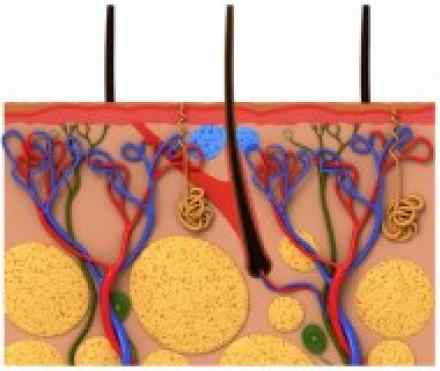
What is it?
- An ingrown hair occurs when a shaved or tweezed hair grows back into the skin, causing inflammation and irritation. Ingrown hairs are most common among black males, ages 14 through 25. But an ingrown hair can affect anyone with tightly coiled hair who shaves, tweezes, waxes or uses electrolysis to remove hair.
- The result of ingrown hairs is localized pain and the appearance of bumps in the hair removal area. The bumps can be embarrassing.
- Not removing hair is one way to avoid an ingrown hair. When that isn't an option, you can use hair removal methods that lessen the risk of developing ingrown hairs.
Symptoms
Ingrown hairs most commonly appear in males in the beard area, including the chin, cheeks and, especially, the neck. They can appear on the scalp in males who shave their heads. In females, the most common areas for ingrown hairs are the armpits, pubic area and legs.
- Small, solid, rounded bumps (papules)
- Small, pus-filled, blister-like lesions (pustules)
- Skin darkening (hyperpigmentation)
- Pain
- Itching
- Embedded hairs
Causes
Hair structure and direction of growth play a role in ingrown hairs. A curved hair follicle, which produces tightly curled hair, is believed to encourage the hair to re-enter the skin once the hair is cut and starts to grow back. Shaving creates sharp edges in this type of hair, especially if the hair is dry when shaved. When the shaved hair starts to grow out, it curls back to re-enter the skin (extrafollicular penetration).
When you pull your skin taut during shaving, the newly cut hair draws back into the skin, causing it to re-enter the skin without first growing out (transfollicular penetration). Using a double-edged razor also causes hair to re-enter the skin — the first blade pulls the hair out and the second blade cuts it, which allows the hair to retract. Transfollicular penetration also occurs with tweezing, which leaves a hair fragment under the skin surface.
When a hair penetrates your skin, your skin reacts as it would to a foreign body — it becomes inflamed.
Risk factors
Having tightly curled hair is the main risk factor for ingrown hairs, so the condition is more common among blacks and Hispanics.
Complications
Chronic ingrown hairs can lead to:
- Bacterial infection (from scratching)
- Skin darkening (hyperpigmentation)
- Permanent scarring
Diagnosis
Your doctor can usually diagnose ingrown hairs with a physical exam and a discussion of your hair removal habits.
References:
http://www.healthline.com/health/treating-preventing-ingrown-vaginal-hair
https://en.wikipedia.org/wiki/Ingrown_hair
http://www.medicinenet.com/ingrown_hair/article.htm

